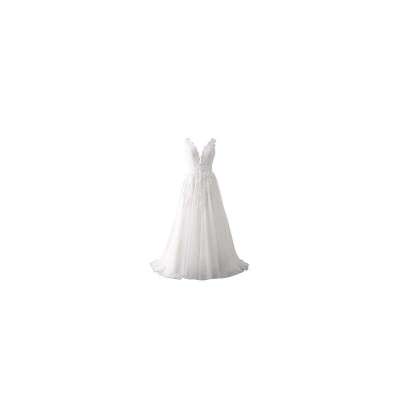
www.thecollector.com
Mummified Cats: Companion Cats and Feline Worship in Ancient Egypt
While it is common to see cats in modern households, cats are among the most recently domesticated animals. Archaeological evidence indicates their presence among human communities from approximately 9,000 years ago, far more recent than dogs, nearly 30,000 years ago, or even cattle, 10,000 years ago. Egypt was one of the first civilizations to bring the feline companion into its cultural orbit, caring for these animals and honoring them in religion, art, and society. They even mummified cats to ensure their passage into the afterlife. While the pharaohs may have ruled Egypt, cats were major players behind the scenes.
The Cat Finds a Home
A facsimile of a cat eating fish under a chair, and the original, from the Tomb of Nakht, 18th dynasty Egypt, c. 1400 BCE. Source: Egypt Museum, Cairo
All domestic cats today are descended from a single species, the African wildcat (Felis sylvestris lybica). This feline is still prevalent in the Near East and Egypt, and around 2,000 BCE, people in these regions began to breed them for domestication. Until recently, it had been believed that the Egyptians were the first to develop familiar relationships with felines, but archaeologists have recently found a wildcat buried with a human in Cyprus dating to the Neolithic era, around 7,000 BCE. As cats are not native to the island, the suggestion is that the cat was domesticated and brought there by humans. However, the skeleton is morphologically that of an African wildcat. Though the burial suggests the animal was tamed, it is still a wildcat specimen, thus not an example of “true” domestication.
Regardless of origin, the purposes of domestication are clear. Cats are exceptional hunters, and their quarry of choice are mice, rats, snakes, and other vermin that threatened food storage in early agrarian societies. That cats are nocturnal, and pests come out to play while humans elect to sleep the night away, only made it a more fitting pairing. As a natural ally, ancient communities adopted the cat as their friendly companion. Patrolling the streets and guarding the house, the cat not only captured its own prey but was also rewarded by the humans in the form of treats. Yet, while the Mesopotamians found mutual benefit in accepting cats into their homes, it was in Egypt that a special bond formed.
The Cat Names Itself
Ra in cat form (Mau) fighting Apep, from the Tomb of Injerkhau, 20th dynasty Egyptian, c. 1160 BCE. Source: Egypt Museum, Cairo
Cats were not only useful to ancient Egyptians, they were beloved. There are undoubtedly examples of prehistoric individuals who found an affinity to cats and may have tamed them, as seen in the Cyprus burial. However, Egyptians took it to another level. Cats were part of the fabric of their society. One of the first indications of an attachment to something is to give it a name. In deciding what to name this precocious creature, Egyptians felt its own self-descriptor was sufficient, naming them “miu” or “mau” after the sound cats make, literally “one who meows.” As cat owners often remark, nobody “owns” a cat. A cat owns itself. And in that same sense, nobody “names” a cat. A cat names itself.
The name Mau even became synonymous with the sun god, Ra, who, in one of his many manifestations, became a cat to fight Apep, the monstrous world serpent that threatened to consume the world in darkness. As cats hunted snakes to protect Egyptian homes, it was logical that Ra would take cat form to fight the ultimate threat to Egyptian cosmic order. And, in keeping with the balance of the universe, Ra always won the battle. Multiple other deities assisted the sun god on his journey through the underworld, but only the feline-powered Ra could defeat the great serpent. This indicated the importance of the cat to Egyptian culture. The most powerful of their gods honored it by taking on its physical form.
The Cat Becomes a God
Bronze statue of the cat goddess Bastet, known as the “Gayer-Anderson Cat,” from Saqqara, Late Period Egypt, c. 664-223 BCE. Source: British Museum
Ra’s various daughters also manifested as cats. Goddesses including Bastet, her alter-ego Sekhmet, and lesser-known deities like Pakhet, meaning “she who scratches,” and Mafdet, an obscure figure dating to the earliest dynasties in Egypt, were all connected to felines.
Bastet was the most famous of these figures, worshiped throughout Egyptian history. Originally a lioness goddess, in later eras, she was depicted as a cat or a woman with the head of a cat. Her cult center at Bubastis dates to the late Old Kingdom, c. 2200 BCE. It became the center of cat worship, and it was here that the millions of cat mummies were placed in tombs as votives to Bastet. She was a protector of Ra as well as a protector of the pharaoh. Just as cats defended the home, Bastet defended Egypt itself. Additionally, she was a goddess of childbirth and a protector against diseases, as was her counterpart, Sekhmet.
Originally distinct goddesses, Sekhmet merged with Bastet to become the fiercer side of a feline. A goddess of war and destruction, according to one myth, Ra sent Sekhmet to punish mankind. She gladly obeyed, but her bloodlust became too much to control. In an act of mercy towards humanity, Ra created a lake of beer but colored it red to resemble blood. Sekhmet descended from the heavens to lap it up like a bowl of milk, became drunk, and forgot her mission of destruction. Thus, the Egyptians were saved from the wrath of the lioness.
The Obsequies of an Egyptian Cat, by John Weguelin, 1886. Source: Auckland Art Gallery
As cats are independent and unpredictable creatures, capable of both companionship and detachment, Bastet and Sekhmet reflect their contradictory qualities. The cat was frequently depicted in myth, though it is not quite accurate to claim Egyptians worshiped cats themselves. While honored, Egyptians did not believe the average cat was a god. They did, however, understand them to be connected to the divine realm and believed that they acted as spiritual guides who led people into the afterlife. Upon their own death, cats themselves were often mummified and even given offerings.
The Cat in the Afterlife
Cat mummy, Ptolemaic Egypt, c. 323-30 BCE. Source: Rosicrucian Egyptian Museum
Mummification is synonymous with Egyptian civilization today. In addition to humans, there were millions of animal mummies, from crocodiles and lions to dogs and birds. Yet, as cats were the favorite companion animals, they are the most common animal mummies.
Cat mummification dates back to even before full domestication, as excavated tombs in Predynastic Abydos (before 3000 BCE) have unearthed cat skeletons buried with rows of tiny milk bowls provided for them to lap up in the afterlife. For kings, gold, silver, and precious jewels were the treasure of choice, but for cats, milk was worth more than colored metals and stones.
As Egyptian civilization advanced, depictions of cats increased in frequency in tombs. By the New Kingdom, thousands of images, from tomb frescoes to carved reliefs to regal statuary, portrayed cats, and they appeared more often than any other animal. The most common representations depict them either in hunting or fowling scenes, domestic scenes with men and women, often sitting beneath their owners’ chairs, or as Ra fighting Apep.
Fresco of a cat hunting birds, from the Tomb of Nebamun, 18th dynasty Egypt, c. 1300 BCE. Source: British Museum
Despite the honor of being mummified and preserved in the afterlife, the harsh reality of cat reverence reveals shocking facts. While debated by historians, there is evidence that cats were raised in temples from kittenhood to be ritually sacrificed to the gods they represented, particularly Bastet. Typically, they were drowned, as this symbolized that they were not truly dead but only “put to sleep” to be reawakened in the afterlife. However, there is also evidence that their necks would be broken. This sacrifice served two purposes: to honor the gods with the sacrifice of a special animal and to provide the lower social classes with a cat mummy to take with them into the afterlife. As only the wealthy could afford statuary that magically came to life to accompany them into the next life, the poorer classes needed the actual mummy, which was far cheaper.
The Cat as Family Member
Sarcophagus of Prince Thutmose’s cat, Ta-Miu, 18th dynasty Egypt, c. 1391-1353 BCE. Source: Egypt Museum, Cairo
While shocking to modern audiences, ritual sacrifice reflected the complex role of cats in ancient Egyptian society. On one hand, they were killed for the gods. On the other hand, they were given offerings in the afterlife. They were treated with such respect that, according to the Greek historian Herodotus, Egyptians shaved their eyebrows in mourning at the family pet’s death. A later legend claimed that the Persian Empire was able to conquer and annex Egypt solely due to Egyptian devotion to cats. At the Battle of Pelusium in 525 BCE, the Persian king Cambyses placed the animals in the arms of his front-rank soldiers to deter the Egyptians from attacking. Indeed, the “Egyptians did not dare to shoot their arrows for fear of wounding the animals.” Thus, the entire kingdom fell for refusal to fight cats. Elsewhere, Herodotus claimed that a Roman once accidentally killed a cat, and in retaliation, the Egyptians dragged him from his home and beat him to death in the streets.
It seems clear that more than just being religiously significant, the Egyptians adored cats. This can be seen on the sarcophagus made for the cat of Prince Thutmose, named Ta-Miu, literally “she-cat.” The stone sarcophagus was carved with reliefs of the cat seated with offerings of what appears to be jars of milk and a chicken before her.
Cat mummies, Roman Egypt, c. 30 BCE. Source: British Museum
Another common misconception is that dogs were less important than cats in Egypt. But dogs were also honored in religion, depicted in art, and cared for in society. Dogs and cats were, just as in modern societies, beloved pets. Perhaps the reason the dog is not more prevalent in accounts of the ancient Egyptians is that while dogs were beloved in many societies, the Egyptian dedication to their feline companions was unique. Just like we do today, the ancient Egyptians saw many animals, including cats, dogs, and birds, not just as pets but as family.
The Cat Mummy as Fertilizer
Cat mummy, Egyptian, unknown date. Source: Houston Museum of Natural Science
Cats had a pervasive role in Egyptian culture as they were adored, honored, and even sacrificed, seen as protectors of the home, treated as pets and family members, and remembered in the afterlife. Sadly, millions of these animals would later serve as fertilizer in the 19th century. With the discovery of Egyptian archaeology in the 1800s, Egyptomania, specifically “mummy mania,” swept the British Empire. Wealthy patrons, amateur archaeologists, and even curious shoppers purchased mummies for various reasons. Some were to be displayed as curiosos or museum pieces in private collections, while others were unwrapped and discarded, and their wrappings were used as paper in newspapers. Mummies were even ground up to be utilized in oil paints, the literal origin of the color “mummy brown.” Still others were actually consumed as medicine.
Dating back to the late Middle Ages, European doctors were convinced chemicals like bitumen and natron, used in the mummification preservation process, were also cure-alls for living patients. Human mummified remains were consumed as food and drink, and when human mummies were in short supply, cat mummies did the job quite well. And since mummies could theoretically help in medicine, they could equally help crops grow more readily for landowners. In 1890, 180,000 cat mummies were sold at auction in Liverpool, England, promptly ground up, and spread on farms as fertilizer. Something sacrilegious to ancient Egyptians and saddening to modern cat lovers was simply practical for 19th-century English farmers.
Cat domestication, cat worship, and cat mummies are all part of a complex history. The Egyptians were not the first to tame them, and they did not truly worship them as gods, and many of their cat mummies met tragic afterlives. However, cats were beloved by the ancient Egyptians, and they were appreciated for their precocious nature and honored for their helpfulness, companionship, and affection. While the famous line from Terry Pratchett may not be completely historically accurate, modern feline lovers understand its truth: “thousands of years ago, cats were worshiped as gods; they have not forgotten this.”














